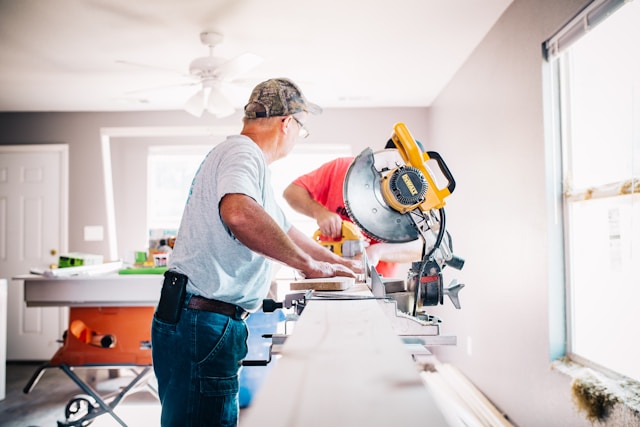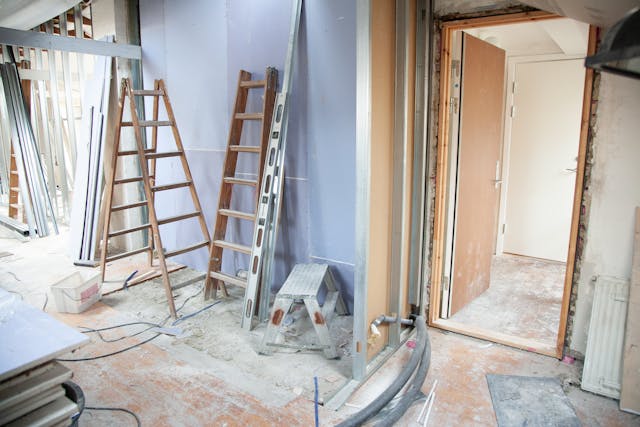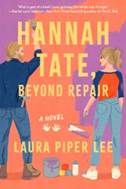Welcome to the Moms Rock Giveaway Hop!

Entry-Form
: center;”>Enter for your chance to win $10 PayPal
MamatheFox and all participating blogs are not held responsible for sponsors who fail to fulfill their prize obligations.

: center;”>Enter for your chance to win $10 PayPal
MamatheFox and all participating blogs are not held responsible for sponsors who fail to fulfill their prize obligations.
There are a lot of improvement jobs that come with being a homeowner. If you live in a home long enough, you’ll likely have to go through renovations like a new kitchen, replacing some carpeting, repaving the driveway, and much more. One common home improvement job is the building of a new roof. Roofs only remain safe for so long, eventually requiring homeowners to install a new one. When this time comes, there are a few things you can do to make the process a little easier. Below are five tips to keep in mind when it comes time to build a new roof on your home.
Choose the Right Style
The first thing you should think about is the style you want for your roof. There are many options to consider, such as a gable roof, a hip roof, a gambrel roof, a mansard roof, a flat roof, a shed roof, a butterfly roof, a curved roof, and a saltbox roof. Which style you go with will depend on a few factors, such as costs, your style, and the type of roof you already have in place. For example, if your home was built with a steeply slanted roof, you may have a hard time with flat roofing, as your home won’t be able to accommodate it. Explore the different styles available and see which ones best fit your particular needs.
Pick the Right Materials
After you know the style you want, you can then start thinking about the materials. Materials are important to your roof, as they impact everything, like the cost, appearance, and energy efficiency. Common materials for residential roofs include asphalt or wood shingles, metal, slate, solar tiles, or synthetic materials. Each has its pros and cons, and it’ll be up to you to decide which is right for you. If you’re unsure which material to go with, a professional roofing contractor can provide expert recommendations.
Work with a Professional Roofing Service
Speaking of roofing contractors, it’s important that you don’t attempt to build a new roof on your own. Building a new roof is a complicated process, and it’s essential to get it right. Rather than attempting to do any work on your own, you should look for a professional roofing service in your area.
When exploring potential contractors, there are a few factors to keep in mind. First, make sure anyone you’re considering has a good track record of quality work. You can typically find reviews from previous customers online to help you determine if a contractor performs well. Also, make sure the contractor you select is fully insured in case there are any accidents while they’re on the job. Finally, get an estimate from several contractors, then use this to pick the one that best fits your budget.
Consider Energy Costs
Another important consideration is your home’s energy costs. Your roof plays a big role in regulating the temperature inside your home. During the winter months, you want to trap heat inside, while during the summer, you want to let the hot air out. You can make your home more energy-efficient by selecting certain materials and design elements during your roof build. This, in turn, will save you money on your energy costs each month and can even raise the value of your home when it comes time to sell.
Schedule Regular Inspections
Lastly, once your roof is complete, it’s important to schedule regular inspections. Roofs can become damaged over time, making them less safe and less efficient. Regular inspections will ensure that there are no issues with your roof. If the inspector finds any problems with your roof, you’ll want to address them as quickly as possible to ensure your home is safe.
It’s recommended that you have your roof inspected twice per year. However, if you experience any severe weather in your area, it’s a good idea to schedule an inspection sooner to make sure there is no damage.
Build Your New Roof the Right Way
Getting a new roof for your home is a big step. It not only takes a lot of time and money, but your new roof will be around for a long time. This is why it’s important to carefully consider your choices each step of the way. Doing so can help you save money in the long run and ensure that you’re happy with the final result. Hopefully, the above tips will help you get through the process, and before long, your home will have a new, safe, and gorgeous roof that you love.
So, you want to increase your productivity? Try developing habits that let you make the most of each day. Developing these three effective habits will help you become more productive and manage your time better. With time, these little adjustments will add up to maximize performance and change the way you allocate your time and energy.
Establish specific goals at the beginning of each day to increase productivity. Review your to-do list in the morning for ten to fifteen minutes.
Moreover, determine the top priorities for the day and make a list of them in that order. A strategy aids in keeping your attention on the essential things. Make sure your daily actions align with your weekly and monthly objectives. Reassess your priorities often and make any adjustments. Never be afraid to rearrange things or put off less crucial chores. It’s critical to focus on the things that matter most.
Additionally, break down large objectives into smaller activities after determining what’s most essential. To accomplish your goals, create a strategy with precise actions. Establish due dates and allot time for critical activities. Every day, record your improvement. Appreciate small victories to keep yourself inspired.
Though having well-defined strategies is crucial, be prepared to adapt when circumstances demand. You never know what will happen, so be adaptable. It becomes simpler if you practice making a plan for the beginning of each day. You’ll do more in less time. You may accomplish your goals by forming good everyday routines.
Moreover, if you live in a fast, dynamic city, managing daily tasks becomes even more critical. Especially when considering the need for mental health support. Alongside setting specific goals and priorities, it’s crucial to acknowledge the resources available. For example, depression treatment in Los Angeles or any other city in the US offers a variety of options. These include therapy sessions, support groups, and holistic approaches like mindfulness workshops and wellness retreats. Integrating mental health care into your daily routine not only enhances productivity but also fosters overall well-being and resilience.
Reducing distractions is essential to increasing productivity, especially when it comes to device alerts. These continual warnings might impair concentration and decrease productivity. Turn off your devices’ notifications to prevent disruptions, and only check messages during scheduled breaks. Another important habit is the ability to focus on one activity at a time before moving on to the next, or single-tasking. Silence your phone and close any open tabs or apps. This enables you to focus your mental energy on the job, producing work of a greater caliber in a shorter amount of time.
Not only that but there are always distractions in the digital world of today. You may regain control over your time and productivity by purposefully controlling them by setting notification limits and engaging in single-tasking activities. These routines enable you to focus on your work and block out distractions. While establishing new patterns takes intentional work, the benefits of increased productivity and less stress are priceless.
Spend a few minutes every day thinking about how to reduce distractions and focus instead. You may do more in less time with far greater productivity if you make little adjustments to turn off alarms and concentrate on one activity at a time. Better habit development can help you take charge of your time so you can live a purposeful life and achieve meaningful objectives.
A disorganized workstation causes mental clutter. Maintain a regular workspace by putting away extra documents, reducing distractions, and concentrating on one activity at a time. Make sure there is room for computers and writing supplies, and place high-priority items in easy reach.
Your productivity and mental energy may decline if your digital environment is disorganized. Unsubscribe from pointless email newsletters and social media accounts, plan daily inbox, folder, and cloud storage sorting, and delete unused browser tabs and applications to increase productivity. Your productivity and efficiency can increase with a streamlined desktop and file storage system.
Look at how you use your time daily. Are there times when you feel too busy? Are there tasks that could be delegated or eliminated? Re-organize or re-prioritize items on your schedule to create more open blocks of time for high-impact work. You may need to reduce or remove less significant tasks and time-wasters. An optimized schedule focused on your key priorities and goals will make you far more productive.
Establishing simple habits to declutter your physical and digital spaces and streamline your schedule can have an enormously positive impact on your productivity and focus. Freeing up mental bandwidth by simplifying your environment and routine allows you to better concentrate on the work that really matters. Make these daily practices a key part of your time management strategy.
Implementing daily habits can boost productivity in both your professional and personal life. Start with one or two habits that resonate with you, gradually adding more as they become second nature. Continuously evaluate and fine-tune your approach for improved time management and efficiency.
When your loved one gets diagnosed with a chronic disease, it’s like suddenly becoming the reluctant member of a club nobody really wants to join. The welcome basket? A lifetime supply of doctor’s appointments and an encyclopedia of unpronounceable medications. However, amidst the sighs and the syringes, there’s room for laughter and life. Here’s how you can help your dear one squeeze every drop of joy out of a seemingly leaky situation.

Via Pexels
First things first, let’s talk about the squad goals. Managing a chronic illness isn’t just a job for any doctor; you need someone who will be dedicated to helping you live a full life. This is where you might want to find a professional with expertise in integrative medicine. They’re not just treating symptoms; they’re strategizing for maximum vitality—kind of like a life coach in a lab coat.
Routine sounds about as fun as watching paint dry, but hear me out. Establishing a regular routine for medications and checkups can turn the chaotic into the charismatic. Morning meds lead to a special breakfast; evening pills come with sitcom reruns and dessert. It’s about creating positive associations and a comforting predictability that doesn’t feel like a medical regimen.
Chronic disease might seem like a full-time job that discourages vacations, but let’s flip the script. Every day can be an adventure, even if it’s a tiny one. Encourage your loved one to try new hobbies that fit their energy levels—be it watercolor painting, mastering the ancient craft of bonsai, or competitive bread baking. These activities aren’t just distractions; they’re doors to new worlds, available from the comfort of home.
Maintaining social connections is crucial, but when you’re dealing with a chronic illness, not every friend understands what they’re going through. Help your loved one foster connections with people who get it. Support groups can be a goldmine for finding your tribe—people who know that a canceled plan isn’t flakiness, it’s self-care. Plus, laughter with those who understand can often be the best medicine for the soul.
In the digital age, there’s an app for everything—including managing chronic illnesses. Leverage technology to track symptoms, schedule medications, and even connect with doctors via telehealth. These tools can make managing a chronic condition less of a chore and more of a tech-savvy journey. Because nothing feels quite as satisfying as hitting a symptom tracker and realizing you’ve got more good days than bad.
Helping a loved one with a chronic disease isn’t just about managing symptoms; it’s about crafting a life that’s vibrant within the outlines of their condition. It’s about laughing at the absurdities, finding joy in the small victories, and knowing that while life may be a bit different, it can still be beautifully full. So, bring on the challenges—armed with humor, creativity, and a dash of defiance, you’re ready to make every day worth its weight in wellness.
Cryptocurrency has gained massive popularity as a medium for private transactions and an investment vehicle. This is largely thanks to the many benefits it offers as a decentralized currency and its potential to provide lucrative gains. However, as a beginner looking to venture into the world of digital currency, you probably have a lot of questions, especially about how to buy cryptocurrency. In this piece, we take you step by step through some of the ways you can go about acquiring your virtual currencies.
First things first, you need to choose a reliable method through which you can buy cryptocurrency. There are several ways you can buy digital currencies and these include:
As you choose how to buy your cryptocurrency with cash, consider several factors such as regulatory compliance, security, transaction charges, speed of transaction, and user-friendliness.
Before you buy your cryptocurrencies, you will need to have a digital wallet that you will use to safely store your virtual currencies. There are hot (online) and cold (offline) wallets and it’s up to you to choose the one that works best for you. You can even have both, so you keep the cryptocurrency you need to transact regularly in an online wallet and the balance, that you do not intend to trade immediately, in a cold wallet.
As you explore how to buy cryptocurrency with cash using crypto exchanges and other platforms, you need to open an account—which is a fairly easy process. You just need to provide your name, email address, and contact details. After that, you need to validate your identity, as it is often a requirement of many platforms to prevent fraud. You will be required to provide a government-issued identification document like a driver’s license, passport, or ID card. If you’re opening the account online, you may be required to take a selfie for verification.
Depending on the method you’re using to buy cryptocurrency, you can initiate transactions in different ways. If you’re using an online platform, you browse through the listings to find sellers who will accept cash and have a good reputation. You can then initiate the trade by engaging them and agreeing on the terms of the transaction. You may arrange to meet with the buyer or how you remit their payment so they transfer the crypto to your wallet.
If you’re buying digital currency at a physical exchange, you hand over the money after agreeing on the exchange rate and the exchange staff transfer the coins to your wallet on the exchange. When buying from an ATM, you locate the nearest machine and visit it. You then follow the instructions on the screen to deposit cash and get cryptocurrency in your wallet.
You must quickly confirm that you have received the cryptocurrency in your wallet and that the transaction is completed on the blockchain. Where possible, use an escrow service to safeguard your funds, because the escrow service only releases funds to the seller after you confirm receipt of the digital currencies.
After you complete the transaction, take some sensible steps to secure your digital currencies. You can do the following to secure the cryptocurrencies:
If you have been looking for ways to buy cryptocurrency with cash, the above steps can help you maneuver through the process safely. Always, use reputable platforms and methods, and be cautious about the security of your assets.
Discovering your partner has been cheating will have a huge impact on your life. Whether they came clean or you found out for yourself, this revelation can change your life as you know it and bring things crashing down. And when this happens, a lot of people will tell you to end the relationship and move on with your life – but this isn’t always an easy choice for everyone.
Sharing a life with someone else, including love, a home and a family, means walking away isn’t always possible, but is it really possible to recover from your partner’s infidelity?

Image Credit: Unsplash under Creative Commons
Infidelity can take many forms. From one-night stands to full-blown affairs, infidelity can be complex. It might also not be the only thing wrong in your relationship. Consider the impact the infidelity has on your relationship, as well as any other problems you might be facing – it can help you work out whether there’s something worth saving or not.
Try this marriage quiz to help you work out if you’re really happy in your marriage, although remember that’s a question that can only really be answered by you.
Therapy can be a good way of dealing with problems in your marriage, including infidelity. Not only can it be beneficial to have individual therapy, but couple’s therapy can also be useful. Therapy can help you get to the root of why the infidelity happened and other issues in your relationship, and hopefully help you move forward. Even if it still doesn’t work out, at least you can say you tried.
Consider the different outcomes of whether you decide to leave or stay with your partner. From the practicalities such as where you’ll live and how you will raise your children, to how you’ll feel either way, it’s important to look at what each option means for your future. Seeking advice from divorce laws adultery specialists can also give you more information about how the process works and what you would be left with after the divorce. Try to speak to friends and family for guidance during this time, it can help you think about things in a different way to help you make the right decisions.
Ultimately, choosing whether to stay with your partner or not is a decision that only you can make. Either option takes a lot of strength and courage, and you can be sure you’re not in for an easy road. It’s important to get the emotional support you need at this time, and for the people around you to accept and support your decision, no matter what you decide. While divorce may seem frightening, you won’t be the first person to go through it, meaning there are plenty of places to turn to for advice. No matter what you decide, be sure to take care of yourself and always put yourself first.

Home repairs are a necessary aspect of homeownership, and the allure of DIY work can be strong, especially when considering the potential cost savings. However, the reality of undertaking home repairs without professional help can often lead to unexpected challenges and risks. In New Jersey, where homes vary widely from coastal cottages to urban dwellings, the specific demands and conditions affecting these structures make professional oversight crucial in many cases. Understanding when to hire a professional can save not only money but also ensure the safety and longevity of your home. In this blog, we will share reasons why DIY repairs might not always be the best choice.
The first major risk with DIY home repairs is the lack of professional expertise. Many homeowners are not trained to identify structural issues or understand complex systems within their homes. Mistakes in assessing the severity of problems can lead to inadequate repairs that may not only fail to solve the issue but also cause further damage. Without the correct knowledge, what begins as a minor fix can quickly escalate into a costly disaster.
DIY repairs often involve risks that can lead to personal injury or create additional safety hazards in the home. Tasks like electrical wiring or structural modifications require precise skills and knowledge to execute safely. Without proper training and equipment, homeowners expose themselves to significant risk of accidents, which can result in severe injuries or even life-threatening situations.
Roof repairs are particularly hazardous and complex, requiring a clear understanding of materials and techniques to avoid compromising the structure. This is a task where the expertise of a roofing company in New Jersey is invaluable. They are equipped to handle the intricacies of roof work, ensuring that repairs are performed safely and effectively, mitigating the risk of leaks and water damage that can stem from improper DIY repairs.
Another pitfall of DIY repairs is the potential to void warranties on critical components of your home. Many manufacturers require that a certified professional perform repairs and maintenance to keep warranty protections in place. DIY interventions on elements like your furnace, roof, or windows could void these warranties, potentially leading to significant out-of-pocket costs for replacements that would otherwise have been covered.
DIY repairs often treat the symptoms of a problem rather than its root cause. Homeowners may fix a leaky faucet but overlook the underlying plumbing issues causing the leak. This can lead to recurring problems and increased damage over time, as the actual cause continues to deteriorate the home’s infrastructure unnoticed.
While DIY projects are often initiated to save money, they can ironically end up being more expensive than hiring professionals from the start. Incorrect methods, temporary fixes, or damage from failed repair attempts can all lead to higher costs in the long run. Professionals can often get the job done right the first time, avoiding the cascade of costs associated with correcting DIY mistakes.
DIY home repairs often take much longer than expected, especially for those without extensive experience. Homeowners may find that what was anticipated as a weekend project extends over several weekends or even longer, disrupting daily life. This not only delays the resolution of the issue but also takes away valuable time that could be spent with family or on other activities. The efficiency of hiring a professional, who can complete the same task in a fraction of the time, can significantly reduce stress and inconvenience.
Using the right tools is critical for any home repair project, and improper use can lead to damage both to the tool and the home. Many homeowners do not have access to the specialized tools required for certain repairs, leading to improvised solutions that may not be effective or safe. This not only risks injuring the DIYer but also can result in a poorly executed job that may need to be redone by a professional later.
Incorrect installation of home components can have serious repercussions. For example, improperly installed plumbing can lead to leaks, water damage, and costly repairs. Electrical fixtures installed incorrectly pose a risk of fire. Without proper knowledge and techniques, DIY repairs can create issues that might not become apparent until they result in significant damage or require expensive remediation.
Many homeowners are unaware of local building codes and regulations that govern home renovations and repairs. DIY projects that do not comply with these regulations can lead to fines and may require costly adjustments to meet legal standards. Professional contractors are familiar with these codes and can ensure that all work is compliant, avoiding legal headaches and ensuring that the home meets safety standards.
While the appeal of saving money through DIY home repairs is understandable, the potential risks and costs associated can often outweigh these initial savings. Homeowners should carefully consider the scope of any repair project, evaluating whether they have the skills, tools, and understanding necessary to complete it successfully. For many, particularly when it comes to significant or safety-critical tasks, investing in professional services is not just a matter of convenience but of ensuring quality, safety, and peace of mind. This approach not only protects the home’s value but also ensures it remains a safe and enjoyable place to live.

In Illinois, homeowners are always looking for ways to enhance the value of their property. The right home improvement projects can not only make a home more comfortable and aesthetically pleasing but can also offer substantial returns on investment (ROI) when it’s time to sell. Selecting projects that blend personal taste with broad market appeal is key.
The kitchen is seldom considered the center of the home, which is why it’s a point of interest for potential buyers. Upgrading your kitchen can yield a significant ROI. Minor remodels might include replacing cabinet doors, hardware, and appliances, or installing new countertops. These changes can refresh the space without a hefty price tag. On the other hand, a major remodel, which might include changing the layout or high-end finishes, can attract buyers looking for a “move-in ready” home. While more expensive, these changes can often recoup a large portion of their cost in the home’s resale value.
Bathrooms are another critical area where updates can greatly increase home value. Simple improvements like new fixtures, modern lighting, and updated mirrors can make a small space feel luxurious. For more extensive renovations, consider a walk-in shower, updated tiling, or increased storage space. For residents of Plainfield bathroom remodelers like The Bath Center can offer services that ensure your updates are both stylish and functional, contributing to a high ROI by appealing to modern buyers looking for ready-to-use spaces.
Replacing old, drafty windows with new, energy-efficient ones is a practical update that appeals to today’s environmentally conscious buyer. Energy-efficient windows help in maintaining a consistent temperature in the home, reducing heating and cooling costs. While the upfront cost can be substantial, the long-term savings on utility bills and the appeal to buyers often translate into a favorable return on investment.
Outdoor living spaces have become particularly desirable, especially in homes where entertainment and relaxation are a priority. Adding a deck or patio can extend the living space of your home and offer an attractive ROI by making your home more appealing to buyers who envision themselves relaxing or hosting gatherings outdoors. The cost of this project varies widely based on materials and size, but a well-constructed deck or patio can recover a large chunk of its cost at resale.
First impressions are everything, and the first thing potential buyers see is the exterior of your home. Investing in landscaping can dramatically improve curb appeal and attract more buyers. Simple steps like maintaining a neat lawn, adding colorful plantings, and ensuring clear, safe walkways can make a significant difference. More elaborate landscaping designs, including perennial gardens or hardscaping, can be more expensive but also offer considerable returns by setting your property apart from others on the market.
Transforming an unfinished basement into a functional space can drastically increase the overall usable square footage of a home. Whether you turn it into a family room, a home office, or an extra bedroom, a finished basement adds immense value. Typically, these renovations can recoup a significant percentage of their cost at resale. It’s not just about adding space; it’s about adding versatile and desirable space that appeals to a wide range of buyers. By ensuring proper insulation, lighting, and moisture control, you can turn a previously underused area into one of the home’s highlights.
A solid, leak-free roof is essential for the integrity and safety of a home. Replacing an aging roof, while not as visually striking as other renovations, significantly affects a home’s appeal and functionality. Buyers recognize the value of a new roof as it decreases the likelihood of facing costly repairs shortly after purchase. A new roof typically returns a substantial portion of its cost upon resale, making it a wise investment for homeowners looking to enhance their property’s marketability and protect their investment.
The garage door plays a critical role in the home’s exterior aesthetics and security. Replacing an old garage door with a modern, more secure model can boost curb appeal and enhance the home’s security. The ROI for a new garage door is among the highest of home improvement projects because it enhances both the look and functionality of the home. Available in various styles and materials, a new garage door can be a striking addition to your property’s facade.
Integrating smart home technology such as programmable thermostats, smart locks, and lighting systems can make a home more attractive to tech-savvy buyers and those interested in energy efficiency. These systems allow for better energy management and can significantly increase a home’s appeal by adding convenience and a modern touch. While the initial setup costs can be notable, the appeal they add to the home, coupled with energy savings, typically makes the investment worthwhile.
A fresh coat of paint can do wonders for a home’s exterior, providing a quick and effective refresh that can transform its appearance. Complementing the paint job with upgrades such as new siding, updated shutters, or even just some minor repairs can further enhance the home’s curb appeal. These updates are relatively low-cost compared to other renovations but can significantly affect potential buyers’ first impressions.
Conclusion
Investing in the right home improvement projects is essential for homeowners who want to increase their property’s value and appeal. By focusing on areas that offer both aesthetic enhancements and functional upgrades, homeowners can enjoy their living spaces while ensuring they maintain or increase their home’s market value. These projects not only make a home more enjoyable to live in but also position it as a competitive option in the real estate market when the time comes to sell.



 Instagram favorite Dan Pelosi’s instant New York Times bestseller, LET’S EAT (On Sale Now), is more than a cookbook. It is a warm hug of home cooking, sharing both comfort food and connection with 101 of his nearest and dearest Italian American recipes, complete with stories of his beloved relatives and their connections to the dishes. This is a family cookbook for everyone, from Dan’s family to yours.
Instagram favorite Dan Pelosi’s instant New York Times bestseller, LET’S EAT (On Sale Now), is more than a cookbook. It is a warm hug of home cooking, sharing both comfort food and connection with 101 of his nearest and dearest Italian American recipes, complete with stories of his beloved relatives and their connections to the dishes. This is a family cookbook for everyone, from Dan’s family to yours.
A new mom repairs her broken dreams in HANNAH TATE, BEYOND REPAIR (On Sale Now), a hilarious rom-com about starting over that sparkles with intelligence, wit, and compassion. When she sets out to redesign her mother’s cabin, Hannah hires the hot carpenter living in the treehouse next door to stop the place from falling apart, only to find herself falling for him.
In LOVE ME (On Sale Now), Rachel Miller is a versatile lawyer and devoted mother, juggling courtroom and soccer field. That is, until her past is exposed when racy photos with high school flame, actor Jack Bellow, and his love letters hit tabloids, sending Rachel into an unexpected whirlwind.
MamatheFox and all participating blogs are not held responsible for sponsors who fail to fulfill their prize obligations.

Managing a fleet can be a daunting task, especially when it’s just one of your many responsibilities. However, the benefits of effective fleet management are significant. It can boost your operational efficiency, minimize wastage, and ensure your vehicles are always on the move, reaching their destinations with minimal downtime.
This post is going to look at some ways you can keep your fleet efficient and improve your operations.
By being aware of how your vehicles are used, you can identify those that are in high demand or frequently used. This knowledge empowers you to optimize their usage, relieving the pressure on certain vehicles and ensuring maximum efficiency, whether they are rental cars, trucks, or company cars. This not only allows for more effective use of the fleet but also prevents overuse, putting you in control of your fleet’s performance.
Telematics for fleets, the use of ‘black box’ technology to record and transmit data, is a powerful tool for making informed decisions. It allows you to track vehicles and drivers, analyze routes, and more. The more you know about your fleet’s performance on the road, the more strategic your decisions can be. Real-time data is instrumental in ensuring that everything is operating as it needs to, making you feel confident in your fleet management. You can read more about fleet telematics here.
Poorly maintained vehicles can impact how efficiently you are able to operate your fleet. Even if vehicles are not showing signs of wear or requiring any upkeep, having a regular maintenance plan and scheduled vehicle checks can help you identify any issues that could be personal problems and rectify them without impacting your ability to get out on the road. Plus, well-maintained vehicles use less fuel and are safer for drivers who are spending long hours driving.
Preventative maintenance can include tire checks, oil checks, brake inception fluid refills, and more. You can even use a remote diagnostic system to help improve your routine and address issues before they arise. For instance, for a tipper trailer, regular checks of the hydraulic system, wear on the tipping mechanism, and tire condition are crucial to ensuring it operates efficiently and safely, minimizing downtime, and extending the vehicle’s lifespan.
When repairs are needed or parts are nearing the end of their life, it’s crucial not to ignore this information. Taking immediate action to ensure all vehicles are roadworthy demonstrates your responsibility and proactive approach to fleet management. This not only prevents downtime but also ensures the safety of your drivers and other road users, making you feel confident in your fleet’s operations.
The scheduling of staff, shipments, appointments, and more allows you to optimize how our fleet is used so it’s more efficient, and you are left struggling without appropriate vehicles to do what you need to do. Assign the right vehicle to shipments if you’re making deliveries, ensure that you know which members of staff are using what vehicles and when they are expected to be back so you’re not left short, and ensure that those who need to use your fleet can do so without having to delay their work due to being improperly equipped.
Whether you use fleet telematics as described above or not, optimizing your routes using Google maps, GPS software, or other fleet technology can allow you to find the best and fastest routes and be aware of any traffic issues, accidents, build or road closures that might impact your ability to get from A to B. On top of this, if your driver gets lost, is delayed, or has an accident, the software can allow you to track them and get to them if required or get them assistance. It can also alert you when a delivery has been made, when your driver has left a certain location, and how many doors they have left on their route.
Use the data at your disposal to help you optimize how your fleet is issued and ensure it is economical and efficient. This can be identifying common faults on certain vehicles and maintenance costs, possibly indicating overuse or something more serious going on, which drivers perform better on certain routes, who use the most fuel, makes the most stops, and who is delivering or arriving on time. The more you know about how each asset is used, the better decisions you can make on implementing different aspects of fleet management so things are running as you need them to be and downtime bottlenecks are reduced or eliminated entirely.
There are multiple ways you can optimize your fleet, and these tips can be used together or separately to enable you to move towards a more efficient fleet operation.